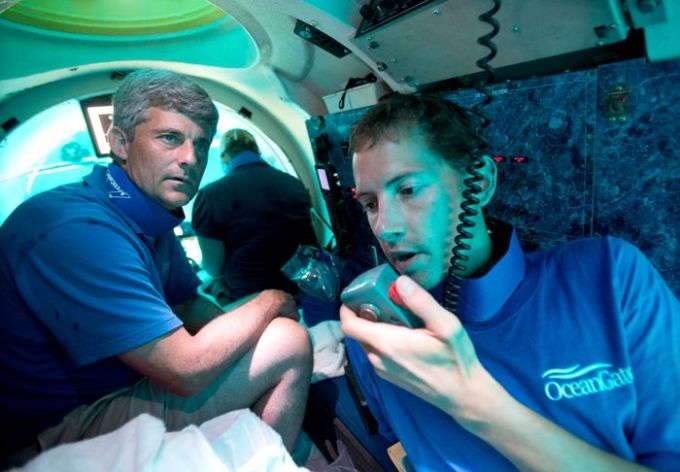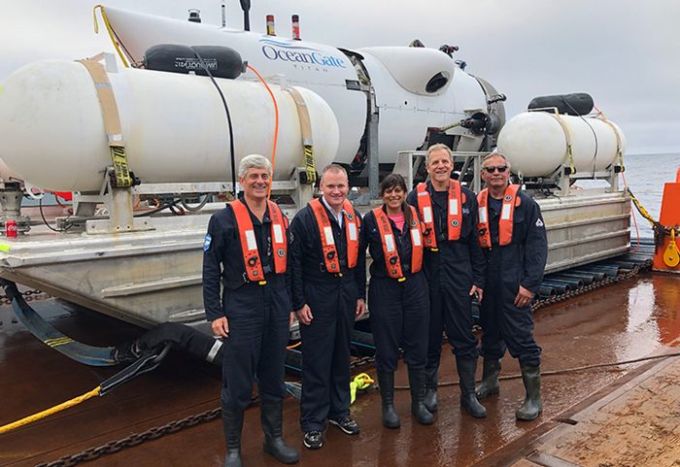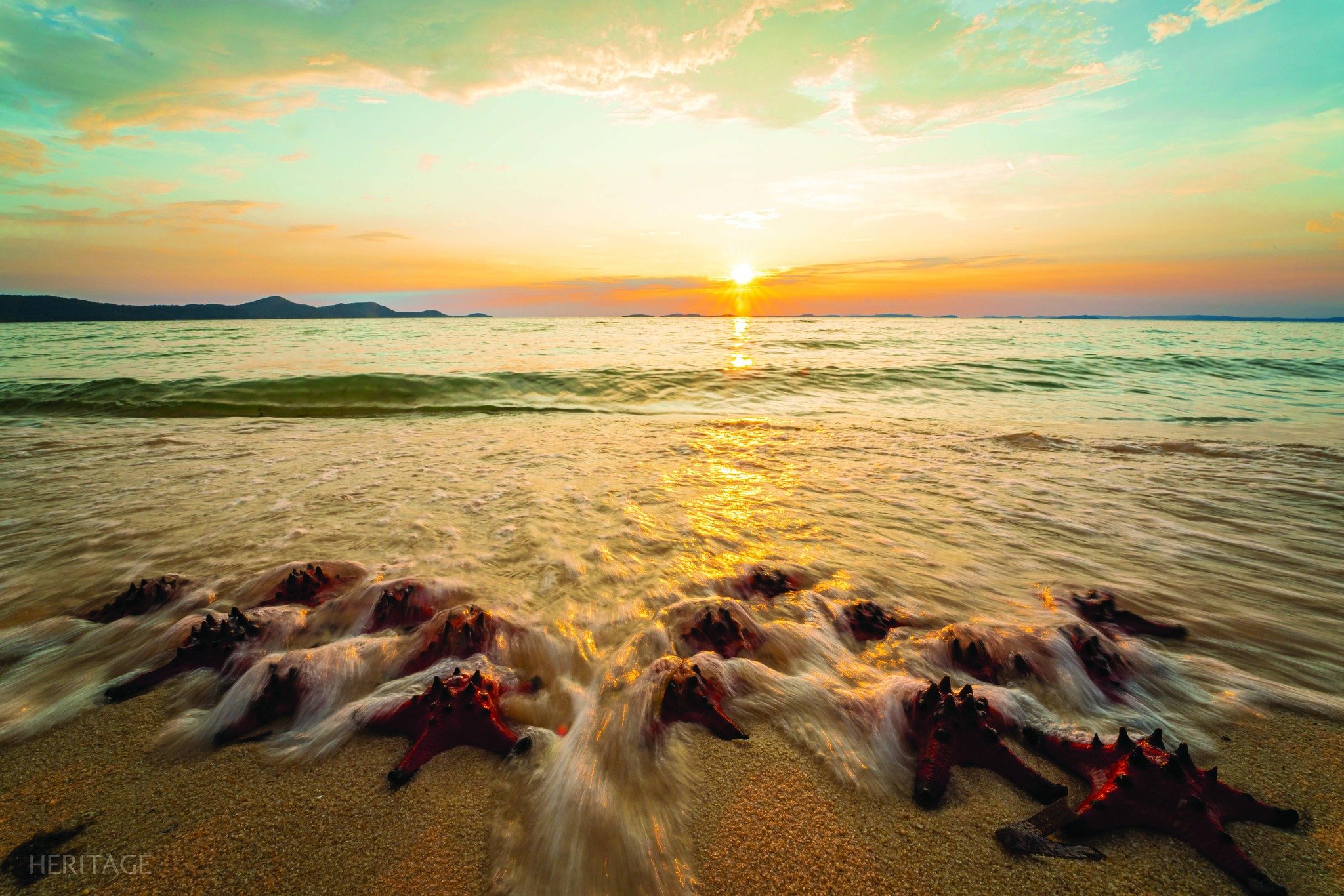Stockton Rush founded the ocean floor exploration company OceanGate Expeditions because he believes that this is where humans will live in the future, not Mars.
Stockton Rush, CEO of the ocean-floor exploration service provider OceanGate Expeditions, was one of five people on board the submarine that went missing in the Atlantic Ocean on June 18. The ship, named Titan, was operated by OceanGate and was on a tour of the Titanic wreck.
Rush founded OceanGate in 2009, based in Washington, D.C. He turned his passion for exploring the ocean floor into a business model because he realized it was much more accessible than space. Rush wanted to do the same thing with aerospace that tech billionaires Jeff Bezos and Elon Musk are doing.
"One of the reasons I started the company was because I didn't understand why we should spend 1,000 times more money to explore space, when we can explore the oceans. The ocean doesn't belong to anyone and there's so much more to explore," he said at a conference in Seattle last year.
In 2021, Rush also affirmed that if it is not possible to live on the surface of the Earth in the future, "the future of humans will be underwater, not on Mars".

Stockton Rush (left) in an OceanGate submersible in 2013. Photo: AP
OceanGate began offering tours of the Titanic wreck, costing about $250,000 per person, in 2020. In 2021, Rush completed his first dive of the Titanic. "Like space tourism, we saw this as an opportunity to give wealthy people access to the shipwreck," he told a Detroit radio show at the time. In 2022, the Titan made 10 such dives over the course of several weeks.
Adventure tourism is considered a high-risk business, but the profits are attractive. As long as you have enough money, tourists can climb Mount Everest, go into space or dive to the bottom of the ocean. "Money is not an issue for the super-rich. They care more about experiences. They want something they will never forget," Nick D'Annunzio - Director of TARA media company said on CNN.
For years, the 61-year-old engineer and explorer has helped the world learn about the ocean floor while also earning money from wealthy tourists. But Rush says the company has yet to turn a profit, due to expensive fuel and other high costs.
In a 2022 New York Times interview, he explained: "For those who think $250,000 is expensive, that's a fraction of the cost of going to space. It costs a lot of money to have a submersible and go down there. There are a lot of people who don't like letting other people make money. But they forget the fact that it's the only way to get anything done in this world."
Born into a wealthy family in San Francisco, Rush studied aerospace engineering at Princeton University. He later earned an MBA from the University of California, Berkeley.

Stockton Rush (left) and the 2021 dive team. Photo: OceanGate Expeditions
Rush’s passion for adventure began early. At age 14, he earned his scuba diving certification. At 19, he became the world’s youngest jet transport pilot, according to the OceanGate website. He also flew around the world for Saudi Arabian Airlines and later worked as a flight test engineer.
"He lived the life any boy would want. I felt like I was working with Henry Ford," Reiss told the WSJ.
Rush had dreamed of space tourism for years and wanted to be a passenger on a commercial flight into space. But in 2004, he changed his mind when British billionaire Richard Branson sent the first group of passengers into space.
“I realized this is not all I want to do. I don’t want to go into space as a passenger. I want to be a captain and an explorer,” he told Smithsonian magazine in 2019.
When he founded OceanGate in 2009, Rush said the company bought a tourist submersible in New Zealand. In 2015, they launched a submersible that could go 490m deep. Then came the Titan, which can go 4,000m deep, deep enough to reach the Titanic wreck.
Rush said that like space exploration, diving to the bottom of the ocean also has its own challenges, such as the need to withstand the enormous pressure on the hull. "It's an engineering challenge. But once you do it, I think the risk is significantly reduced. Of course, nothing is risk-free these days," he said at the Detroit 2021 program.
Rush had to cancel a visit to the Titanic wreck in 2018 when his submersible was struck by lightning, causing electrical damage. His 2019 trip was also marred by problems with the mother ship used to ferry visitors and the submersible.
OceanGate has also faced criticism from the submersible industry for its failure to independently verify Titan’s safety. In 2018, the Ship Technology Association wrote to OceanGate warning that the company’s decision could lead to catastrophic failure. Will Kohnen, president of the association, said most submersible manufacturers hire third-party inspectors to ensure consistency between design and manufacturing.
In 2019, OceanGate said the process was not safe enough, in part because the submersible operator was not sure it followed proper procedures. Kohnen also said that after receiving the letter, Rush told him the process would stifle innovation.
Rush has always emphasized the company's disruptive nature. "If you don't disrupt things, you can't innovate," he said at a conference last year.
He also said he was willing to scrap the design if he had concerns. If the cracking and breaking sounds did not subside on the second dive, "we would scrap it, start over, and build another one."
“Stockton was very proud of his submersible design,” said Joseph Wortman, who participated in the 2021 Titanic dive on the Titan. Rush had traveled around the United States on the Titan to draw attention to his deep-sea explorations.
In a December 2022 interview with CBS , he said that while OceanGate adheres to strict safety regulations, “there are always limits to that.” “If you want to be safe, don’t get out of bed, don’t get out of the car, don’t do anything. In a sense, you’re taking the risk for the reward,” he explained.
Some passengers on previous OceanGate expeditions said Rush's attention to detail put them at ease, even signing waivers that would waive liability if they died during the trip. "I've never met anyone with such attention to detail. I have faith in him," said Mike Reiss, one of the creators of the popular animated series The Simpsons, who went diving on the Titan last year.
Craig Sopin, an employee of the Titanic International Society, an association specializing in Titanic research, said that although Rush did not come up with the idea of touring Titanic, he contributed to the expansion of this tourist attraction. "He wanted the whole world to be able to see Titanic," Sopin said.
Filmmaker David Waud toured the Titanic with Rush in 2021. He described Rush as a visionary who found joy in going to the bottom of the ocean and wanted to share the experience with others.
“When he came back up to the shore, he would usually lie back and sleep. But on the way down, he would talk to all of us because everyone was so excited,” Waud said.
Ha Thu (according to WSJ)
Source link



![[Photo] Ministry of Defense sees off relief forces to the airport to Myanmar for mission](https://vstatic.vietnam.vn/vietnam/resource/IMAGE/2025/3/30/245629fab9d644fd909ecd67f1749123)



![[Photo] Prime Minister Pham Minh Chinh chairs meeting to remove difficulties for projects](https://vstatic.vietnam.vn/vietnam/resource/IMAGE/2025/3/30/7d354a396d4e4699adc2ccc0d44fbd4f)

























































































![[REVIEW OCOP] An Lanh Huong Vet Yen Cat](https://vstatic.vietnam.vn/vietnam/resource/IMAGE/2025/3/27/c25032328e9a47be9991d5be7c0cad8c)



Comment (0)